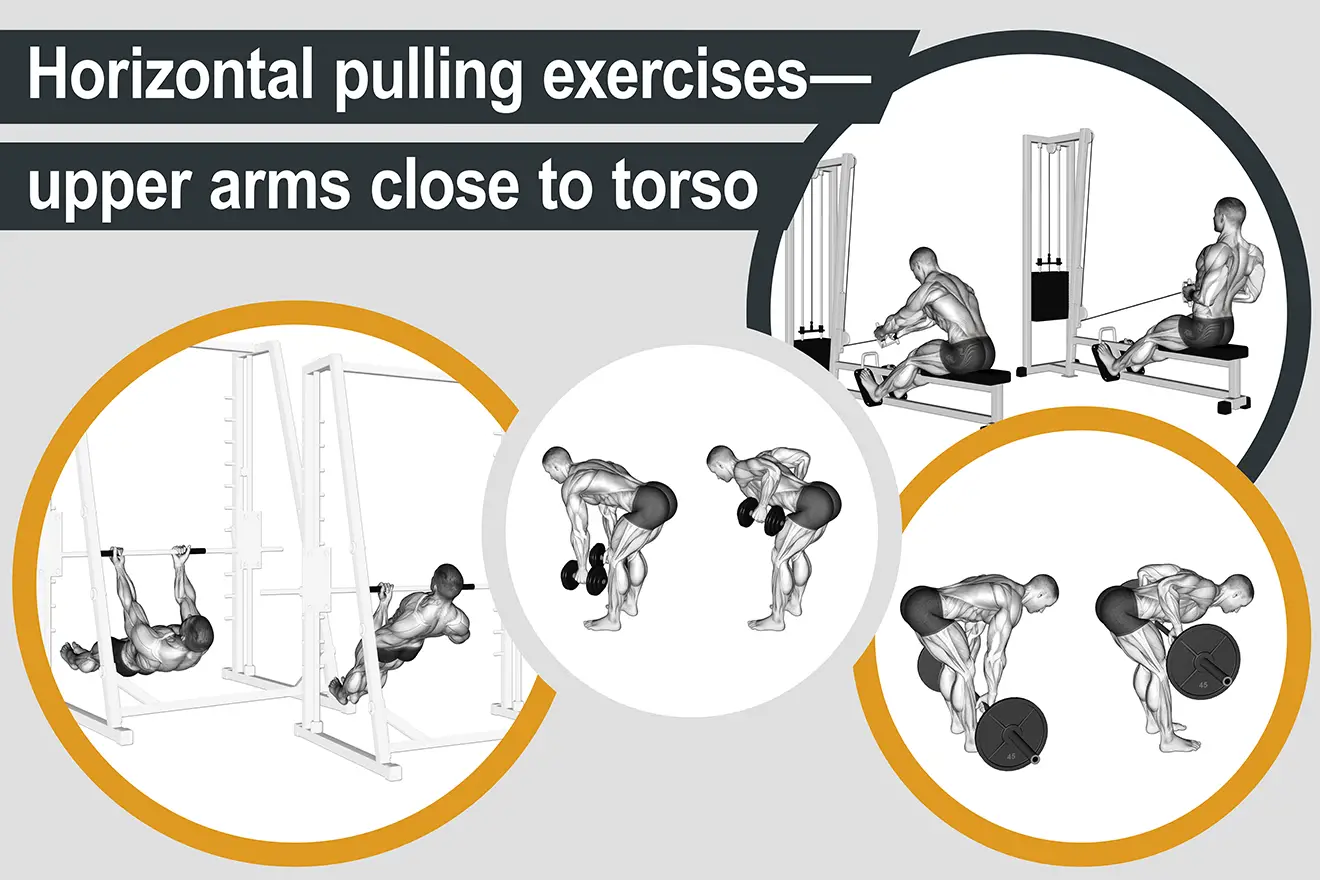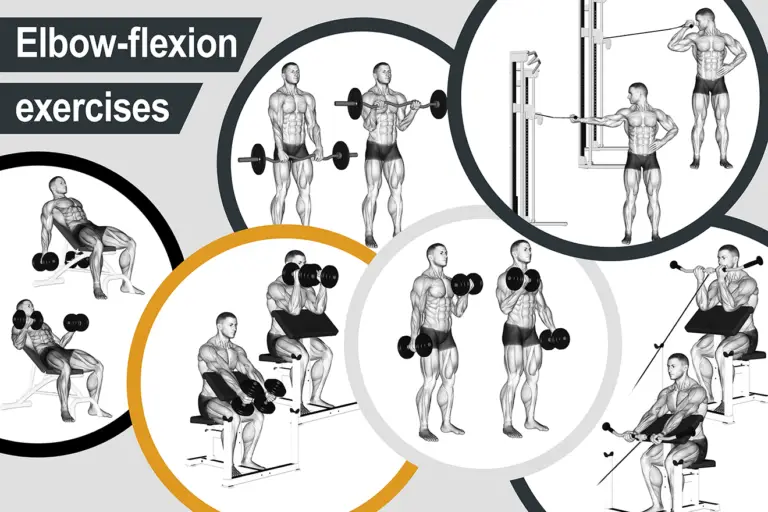Horizontal pulling exercises—upper arms close to torso
Movement patterns and classification
Horizontal pulling exercises in which you keep your upper arms close to your torso (for example, Figure 1) involve either pulling a weight to your abdomen or pulling your abdomen up to a stable bar, with the angle of pull being perpendicular to your torso. The back is usually kept in a neutral position, meaning that the curvature of the spine is kept normal, as if in a standing position. These exercises combine shoulder extension with elbow flexion, with emphasis on the former. Since two joints are involved (the shoulder and elbow), these exercises are classified as compound pulling exercises. (For a discussion on exercise classification systems, see Types of weight training exercise, in the Weight Training Guide.)
Figure 1. Examples of horizontal pulling exercises in which you keep your upper arms close to your torso. A. seated cable row; B. dumbbell row; C. barbell row; D. underhand inverted row.
Muscle activation
Horizontal pulling exercises in which you keep your upper arms close to your torso target your latissimus dorsi, teres major, middle and lower trapezius, rhomboids, and posterior deltoid (Figure 2). They also synergistically activate your lower pectoralis major, triceps brachii (long head only), infraspinatus, teres minor, and elbow flexors (biceps brachii, brachialis, and brachioradialis). You can place more emphasis on your biceps brachii by using a supinated grip, but the target muscles will not change.
If you allow movement in your lower back (waist extension) instead of maintaining a neutral spine (for example, see the seated cable row; Figure 1, A), your erector spinae will contribute as synergists. On the other hand, if you maintain a straight back, your erector spinae will act only as stabilizers. However, if you use a heavy weight, your erector spinae may still be activated to a very significant degree even when acting only as stabilizers.
Figure 2. Main muscles activated by horizontal pulling exercises in which you keep your upper arms close to your torso. *Synergists only if you allow waist extension; otherwise, important stabilizers.
See also Horizontal pulling exercises—upper arms out to sides.









